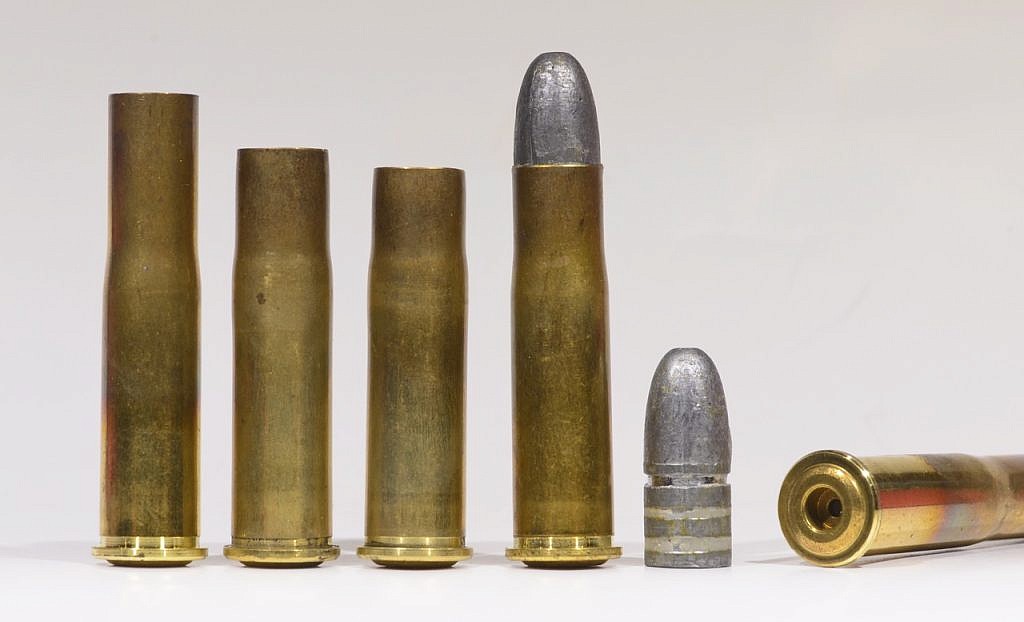
by Terry Wieland
Gun collectors are a strange lot, and that’s putting it mildly. For example, a collector who acquires a pristine, 200-year old gun would no more consider shooting it than he would cut off his left hand. Yet, he insists the gun be capable of firing. A permanently deactivated gun, although authentic in every other respect and identical to the one above, commands a far lower price.
Or consider this: In the 1950s, a number of Lee-Enfield rifles escaped from the Fazakerly arsenal near Liverpool and came onto the civilian market still wrapped in their original brown waxed packing paper, bound with tape and the arsenal’s seal. Some of these have been floating about ever since, changing hands for ever-increasing prices, yet never being unwrapped.
The “original factory packaging” doubles their value to the collector, yet he’s buying a rifle he will never even see. Unwrap it, and its value is halved. Only gun collectors could turn a pig in a poke into a selling point. And the buyers are taking them completely on faith. For all they know, the heavy object in the paper could be a crowbar and a chunk of firewood.
As a shooter, I go completely the other way. I’m not interested in any gun I can’t shoot, whether the reason is damage, intentional deactivation at some previous time, or the fact that a gun is so rare and valuable you would never take the risk.
Then there are those guns that are eminently shootable, but for which no ammunition is available. These present a special case. A year or so ago, in this space, I wrote about a German Schützen rifle I bought at auction, dating from the 1880s, with no indication of what cartridge it was chambered for.
After it had been cleaned and thoroughly checked over, I set about concocting ammunition for it. My friend Bob Hayley was still with us, and getting old guns shooting was his specialty. This was the biggest challenge we had faced up to that time, because we had no idea what we were dealing with, beyond the fact that the bore was about .43 caliber, and the Martini action took a rimmed case.

German gunmakers, an independent lot at best, took pride in those days in making their own alterations to various designs, and coming up with their own cartridges. Many of these — maybe most — went unrecorded by posterity, and since this was the very early era of cartridge rifles anyway, who knows?
At any rate, Bob and I did a chamber cast to see what it looked like, and found it was a bottle-necked cartridge whose base closely resembled the old .43 Mauser. This would be logical, because .43 Mauser brass would have been available as a starting point at that time. The .43 Mauser has what is called a Type ‘A’ base (see photo). To adapt any American case, it would need an abnormally thick rim, although one could add a thin shim around the head of the cartridge, if you found one with a suitable head diameter. Bob grinned wickedly as he told me that; he was a big one for grinning wickedly, as befit a Presbyterian minister who always carried a .45 under his robes.
Fortunately, .43 Mauser brass is available from Bertram in Australia, via Huntington Die Specialties, and Bob had some to play with. The cast showed there was no lip at the front of the chamber to give us a cartridge length; it just tapered gently until it reached the rifling.
Original .43 Mauser was much too long, but we picked a length that seemed reasonable, cut down some brass and, using various dies, compressed it here and there until it fit into the chamber. Bob had a custom mould which cast bullets for the .43 Mauser, and they were close enough to the bore diameter to allow us to stuff them in ahead of a modest charge of IMR 4198. Obviously, it was a black-powder cartridge, but the rifle was hefty enough to handle it.

I fired three rounds, emerged unscathed, sent the expanded cases off to Redding, and a month later there arrived in the mail a set of custom dies, labeled 11.15x51R Kurz — a suitably Teutonic name I made up for our creation. There was also a custom shell holder for the Type ‘A’ case, so I would not need to continue priming using a vise, length of steel rod, and welder’s gloves.
Bob kindly supplied me with a double handful of his 370-grain 11.15mm hollow-based bullets —sized, lubed, and ready to go. Experimentation proved that, while black powder did a creditable job, 28 grains of IMR 4198 delivered a pleasant 1,250 feet per second, and was immeasurably cleaner since the rifle’s mildly pitted bore, while surprisingly accurate, fouled quickly and was a beast to clean. Black-powder purists may disapprove, but they’re not the ones who have to clean it.
At any rate, a rifle billed as “non functional” is once again shooting reliably, accurately, and well, and appearing to enjoy every minute of it. Mission accomplished.
Gray’s Shooting Editor Terry Wieland does not consider himself a gun collector, although he confesses to accumulating them at a remarkable rate. He insists they follow him home, like lost dogs.
